 |
 |
| J Rhinol > Volume 30(2); 2023 |
|
Abstract
Background and Objectives
Methods
Results
Supplementary Materials
Supplementary Table 1.
Notes
Availability of Data and Material
The datasets generated or analyzed during the study are available from the corresponding author on reasonable request.
Conflicts of Interest
Jae Hoon Cho who is on the editorial board of the Journal of Rhinology was not involved in the editorial evaluation or decision to publish this article. The remaining author has declared no conflicts of interest.
Author Contributions
Conceptualization: Eun Jung Lee, Jae Hoon Cho. Data curation: Eun Jung Lee, Jae Hoon Cho. Formal analysis: Jae Hoon Cho. Funding acquisition: Eun Jung Lee. Investigation: Eun Jung Lee, Jae Hoon Cho. Methodology: Jae Hoon Cho. Resources: Jae Hoon Cho. Supervision: Jae Hoon Cho. Validation: Eun Jung Lee, Jae Hoon Cho. Visualization: Eun Jung Lee, Jae Hoon Cho. Writing—original draft: Eun Jung Lee. Writing—review & editing: Jae Hoon Cho.
Funding Statement
This work was supported by a faculty research grant of Yonsei University Wonju College of Medicine (No. 2022-52-0054 granted to E.J.L.) and a National Research Foundation of Korea (NRF) grant funded by the Korean government (Ministry of Science and ICT) (2021R1A2C1010082, granted to E.J.L.).
Fig. 4.
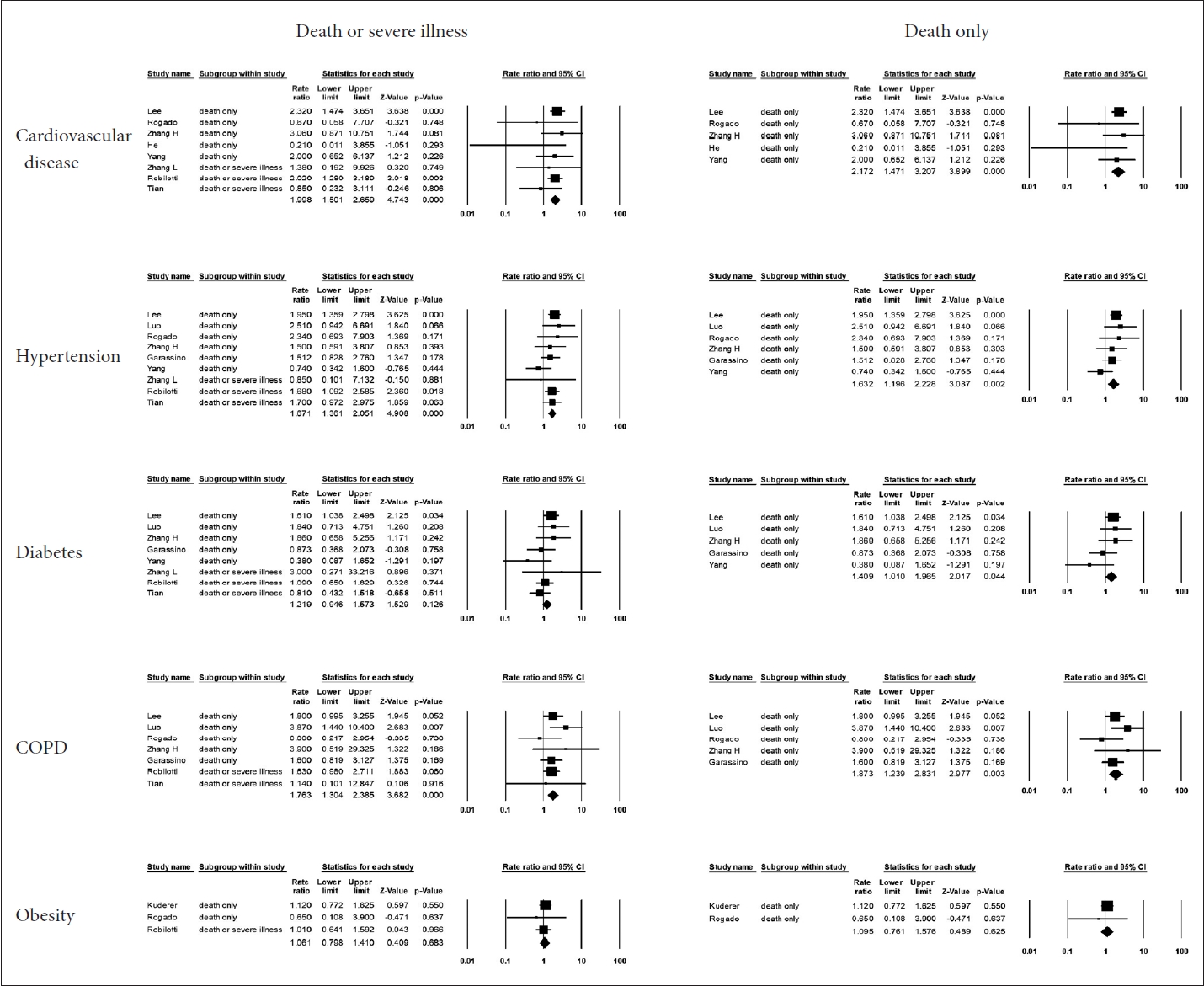
Fig. 5.
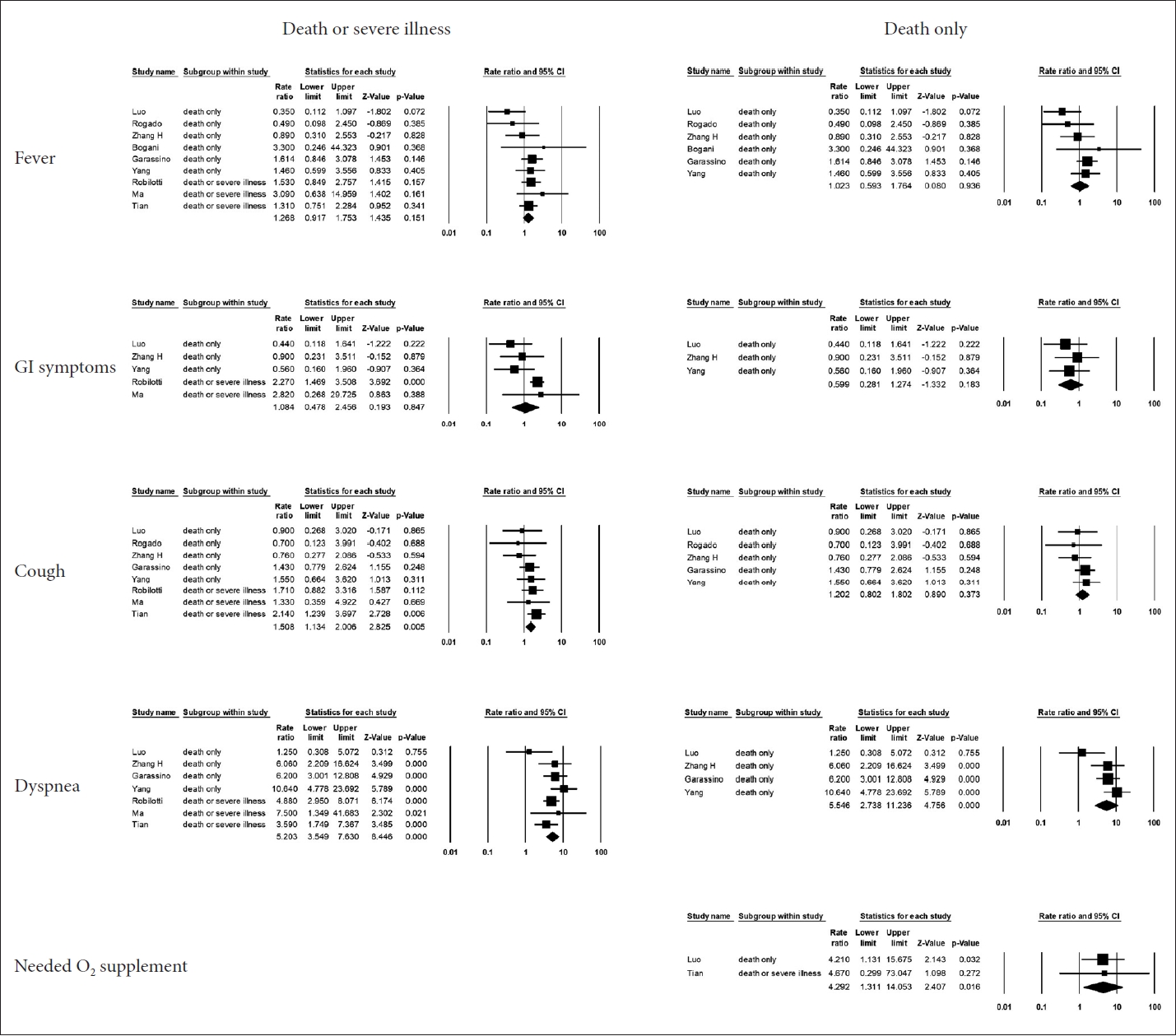
Fig. 6.

Table 1.
| Study | Type of study | Country | No. of enrolled patients | No. of deaths | Age, yr median (range) | No. of male patients | No. of patients with stage IV | Endpoint | Definition of severe illness |
|---|---|---|---|---|---|---|---|---|---|
| Zhang et al. [9] | Retrospective | China | 28 | 8 | 65 (56-70) | 17 | 10 | Severe illness | Requiring admission to an ICU, the use of mechanical ventilation, or death |
| Kuderer et al. [10] | Cohort study | US/Canada/ Spain | 928 | 121 | 66 (57-76) | 468 | - | Death | - |
| Lee et al. [11] | Prospective cohort study | UK | 800 | 226 | 69 (59-76) | 449 | - | Death | - |
| Robilotti et al. [12] | Cohort study | US | 423 | 51 | - | 212 | 238 | Severe illness | Requiring high-flow oxygen or mechanical ventilation |
| Luo et al. [13] | Cohort study | US | 102 | 25 | 68 (61-75) | 49 | - | Death | |
| Liang et al. [14] | Prospective cohort study | China | 18 | - | 58 (47-87) | 12 | - | Severe illness | Requiring admission to an ICU, the use of mechanical ventilation, or death |
| Ma et al. [15] | Retrospective | China | 37 | 5 | 62 (59-70) | 20 | - | Severe illness | Not clearly defined |
| Rogado et al. [16] | Retrospective | Spain | 45 | 19 | 71 (34-90) | 30 | 26 | Death | - |
| Garassino et al. [17] | Cohort study | Multinational | 200 | 66 | 141 | 147 | Death | - | |
| Wu et al. [18] | Retrospective | China | 11 | 4 | 66 (29-73) | 8 | - | Severe illness |
Any of the following criteria: 1) Respiratory distress (≥30 breaths/min) 2) Oxygen saturation ≤93% at rest 3) Arterial partial pressure of oxygen/fraction of inspired oxygen ≤300 mm Hg 4) Respiratory failure that requiredmechanical ventilation 5) Presence of septic shock 6) Multi-organ failure that required ICUtreatment |
| Zhang et al. [19] | Retrospective | China | 107 | 23 | 66 (36-98) | 60 | 23 | Death | - |
| Bogani et al. [20] | Retrospective | Italy | 19 | 3 | 65 (49-84) | 0 | - | Death | - |
| Tian et al. [21] | Retrospective | China | 232 | 46 | 64 (58-94) | 119 | 34 | Severe illness |
Any of the following criteria: 1) Respiratory rate of at least 30 breaths/min 2) Oxygen saturation of ≤93% at rest 3) Arterial partial pressure of oxygen/fraction of inspired oxygen ≤300 mm Hg 4) More than 50% lesion progression in lung imaging within 24–48 h |
| He et al. [5] | Cohort study | China | 13 | 8 | 35 (14-80) | 7 | - | Death | - |
| Li et al. [22] | Retrospective | China | 65 | 18 | 31 | - | Death | - | |
| Yang et al. [23] | Retrospective | China | 205 | 40 | 63 (56-70) | 96 | - | Death | - |
Table 2.
| Study | Cancer type | Cancer treatment within 4 weeks of COVID-19 diagnosis | |||||||
|---|---|---|---|---|---|---|---|---|---|
| Lung | Breast | Colorectal | Hematologic | Immunotherapy | Chemotherapy | Targeted therapy | Surgery | Radiotherapy | |
| Zhang et al. [9] | 7 | 3 | 2 | 0 | 7 | 9 | 4 | 3 | 1 |
| Kuderer et al. [10] | 91 | 191 | 108 | 204 | 38 | 160 | 75 | 32 | 12 |
| Lee et al. [11] | 90 | 102 | 150 | 169 | 44 | 281 | 72 | 29 | 76 |
| Robilotti et al. [12] | 35 | 86 | 37 | 31 | |||||
| Luo et al. [13] | 102 | 50 | 50 | 23 | |||||
| Liang et al. [14] | 5 | 3 | 4 | 1 | 1 | 2 | 2 | 1 | |
| Ma et al. [15] | 8 | 7 | 11 | ||||||
| Rogado et al. [16] | 17 | 6 | 6 | 1 | 19 | 2 | |||
| Garassino et al. [17] | 180 | ||||||||
| Wu et al. [18] | 7 | 1 | |||||||
| Zhang et al. [19] | 21 | 10 | 13 | 9 | 6 | 13 | 6 | 7 | 5 |
| Bogani et al. [20] | 5 | 3 | 5 | ||||||
| Tian et al. [21] | |||||||||
| He et al. [5] | 13 | ||||||||
| Li et al. [22] | 5 | 8 | 8 | 5 | 12 | 6 | 1 | 1 | |
| Yang et al. [23] | 24 | 40 | 28 | 22 | 4 | 31 | 12 | 4 | 9 |




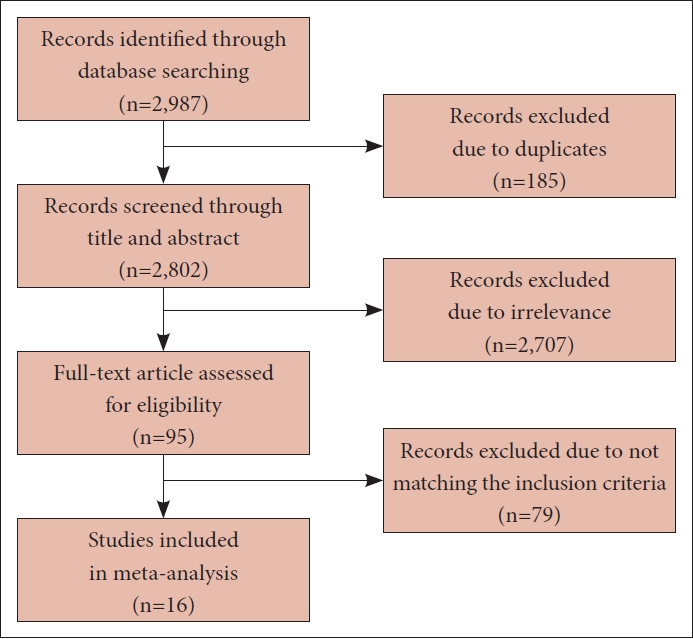
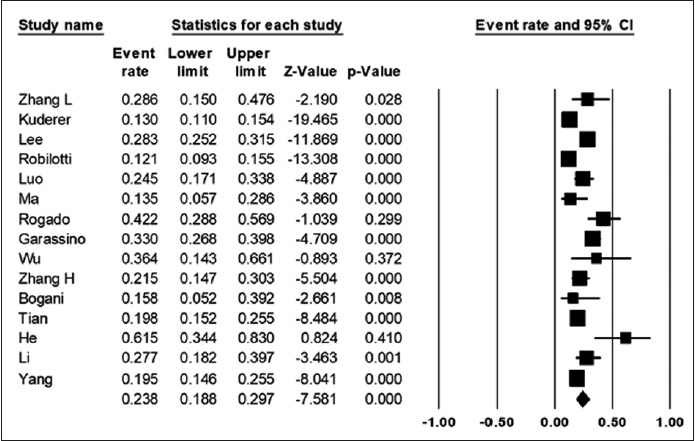
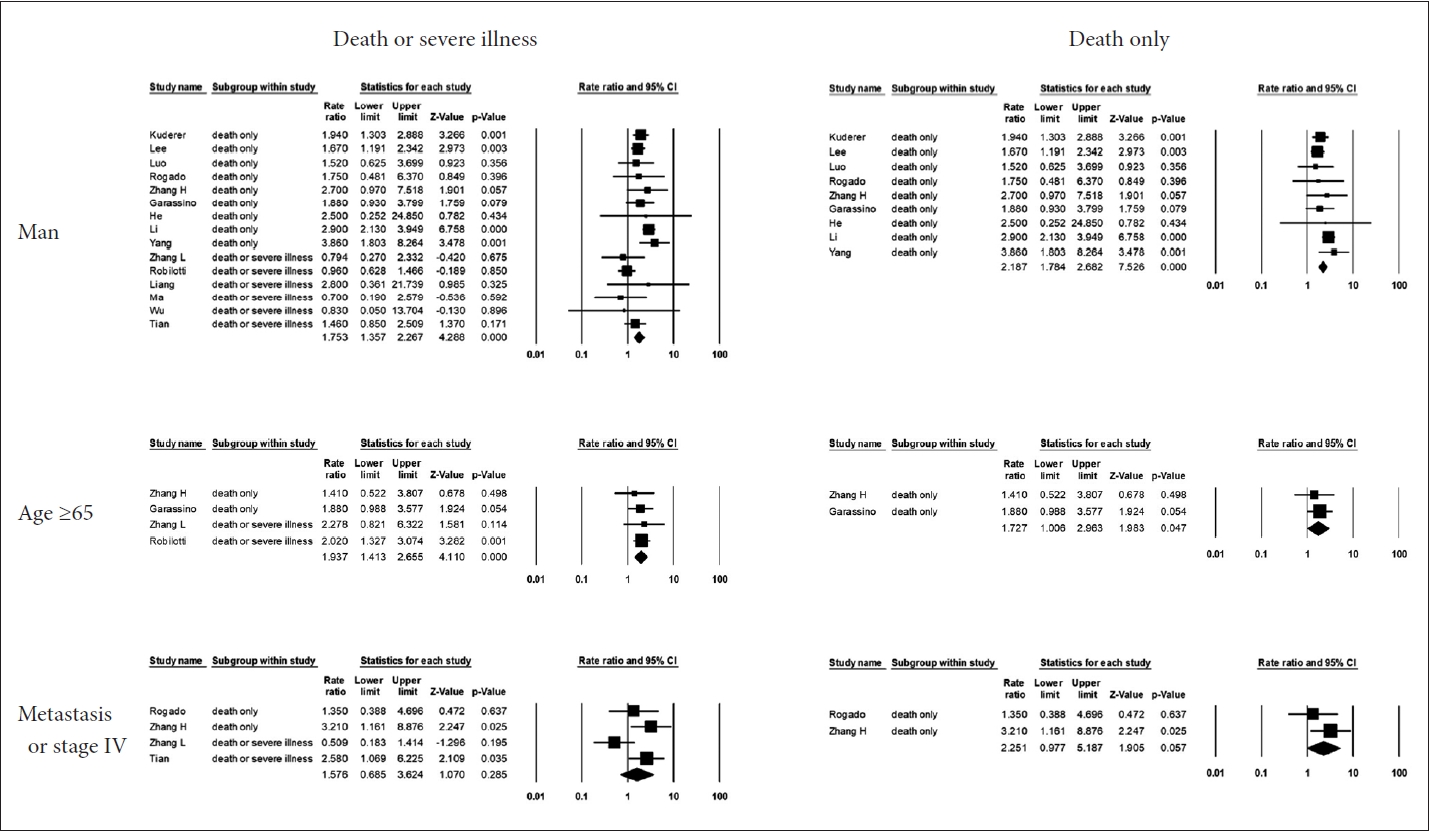
 PDF Links
PDF Links PubReader
PubReader ePub Link
ePub Link Full text via DOI
Full text via DOI Download Citation
Download Citation Supplement1
Supplement1 Print
Print




